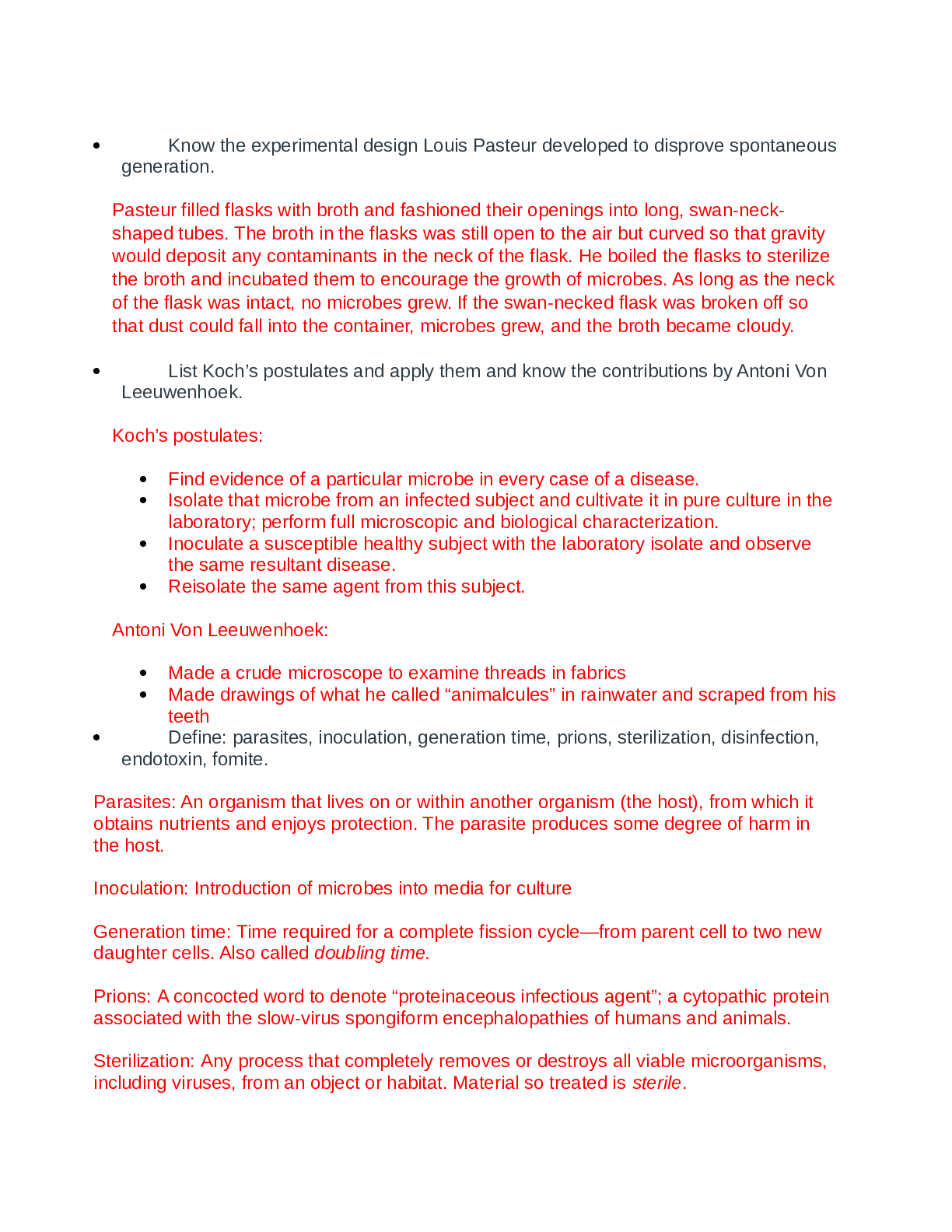*NURSING > Study Notes > Western Governors University NURSING BS C471 CACI Highlights (All)
Western Governors University NURSING BS C471 CACI Highlights
Document Content and Description Below
CACI HIGHLIGHTS Dr. Halli CarrUNIT 2: PAIN • Assessments for pain • Faces vs numeric scale, physiologic signs of pain • Medications for pain (opioid and non) • Geriatric implications •... Palliative considerationsUNIT 3: HEME • Labs/Diagnostics • CBC • WBC – 5-10 10^3uL • HGB – 12-17 g/dL • HCT - 37-51% • Platelets – 130-400 K/uL • MCV – 80-94 • Lymphocytes – 1-4 • Neutrophils – 50-70 % • Bands - noneIRON STUDIESANEMIASICKLE CELL ANEMIA • Change of shape in hemoglobin molecule to a ‘sickle/curved’ shape. • Leads to sticking together in the microvessels, blocking flow, leading to ischemia and pain. • Symptoms: severe pain, signs of poor perfusion, organ failure • Goals of therapy: hydration and pain controlPOLYCYTHEMIA VERA • Slow-growing blood cancer in which the bone marrow makes too many red blood cells. These excess cells thicken the blood, slowing its flow. They also cause complications, such as blood clots, which can lead to a heart attack or stroke. • Treatment: frequent blood draws, antiplatelet agents, anticoagulantsLEUKEMIA • Leukemia is a type of cancer that affects the blood and bone marrow. Leukemia begins in a cell in the bone marrow. The cell undergoes a change and becomes a type of leukemia cell. Once the marrow cell undergoes a leukemic change, the leukemia cells may grow and survive better than normal cells.LEUKEMIAS • Symptoms/assessment findings: fever, chills, swollen lymph nodes, easy bleeding/bruising, bone pain. • Acute Lymphocytic leukemia (ALL) most common leukemia in kids. • Acute myelogenous leukemia (AML) most common type of acute leukemia in adults • Chronic lymphocytic leukemia (CLL) most common chronic adult leukemia • Chronic myelogenous leukemia (CML) adults mostlyLYMPHOMA • Lymphoma is cancer that begins in infectionfighting cells of the immune system, called lymphocytes. These cells are in the lymph nodes, spleen, thymus, bone marrow, and other parts of the body. When a patient has lymphoma, lymphocytes change and grow out of controlLYMPHOMA • Symptoms/assessment findings: swollen lymph nodes in neck or armpit, night sweats, weight loss, fatigue. • Hodgkin’s lymphoma: less common. ReedSternberg cells to diagnose • Non-Hodgkin’s lymphoma: most common [Show More]
Last updated: 2 years ago
Preview 1 out of 108 pages

Buy this document to get the full access instantly
Instant Download Access after purchase
Buy NowInstant download
We Accept:

Reviews( 0 )
$12.00
Can't find what you want? Try our AI powered Search
Document information
Connected school, study & course
About the document
Uploaded On
Sep 04, 2021
Number of pages
108
Written in
Additional information
This document has been written for:
Uploaded
Sep 04, 2021
Downloads
0
Views
150



.png)






.png)


